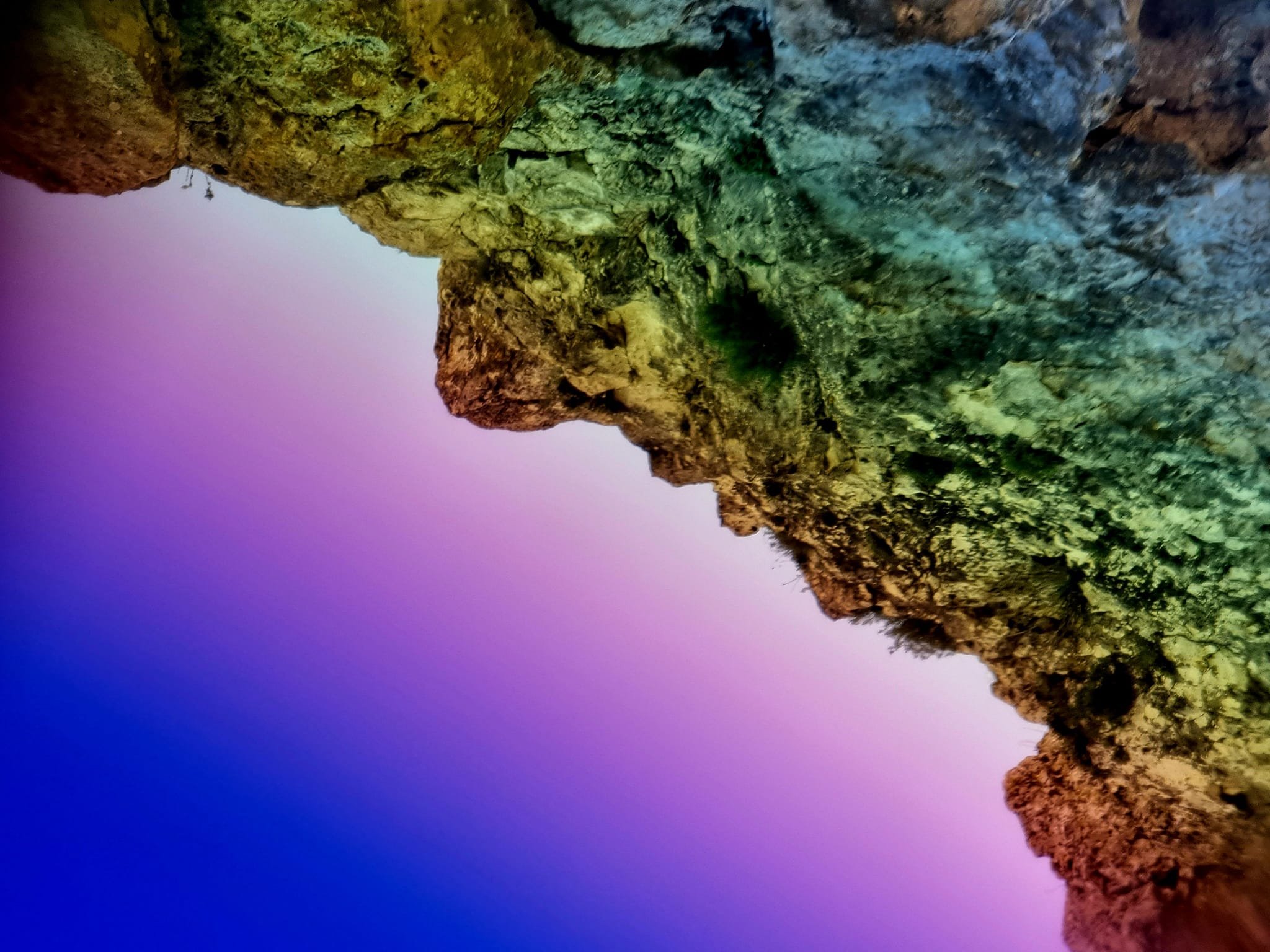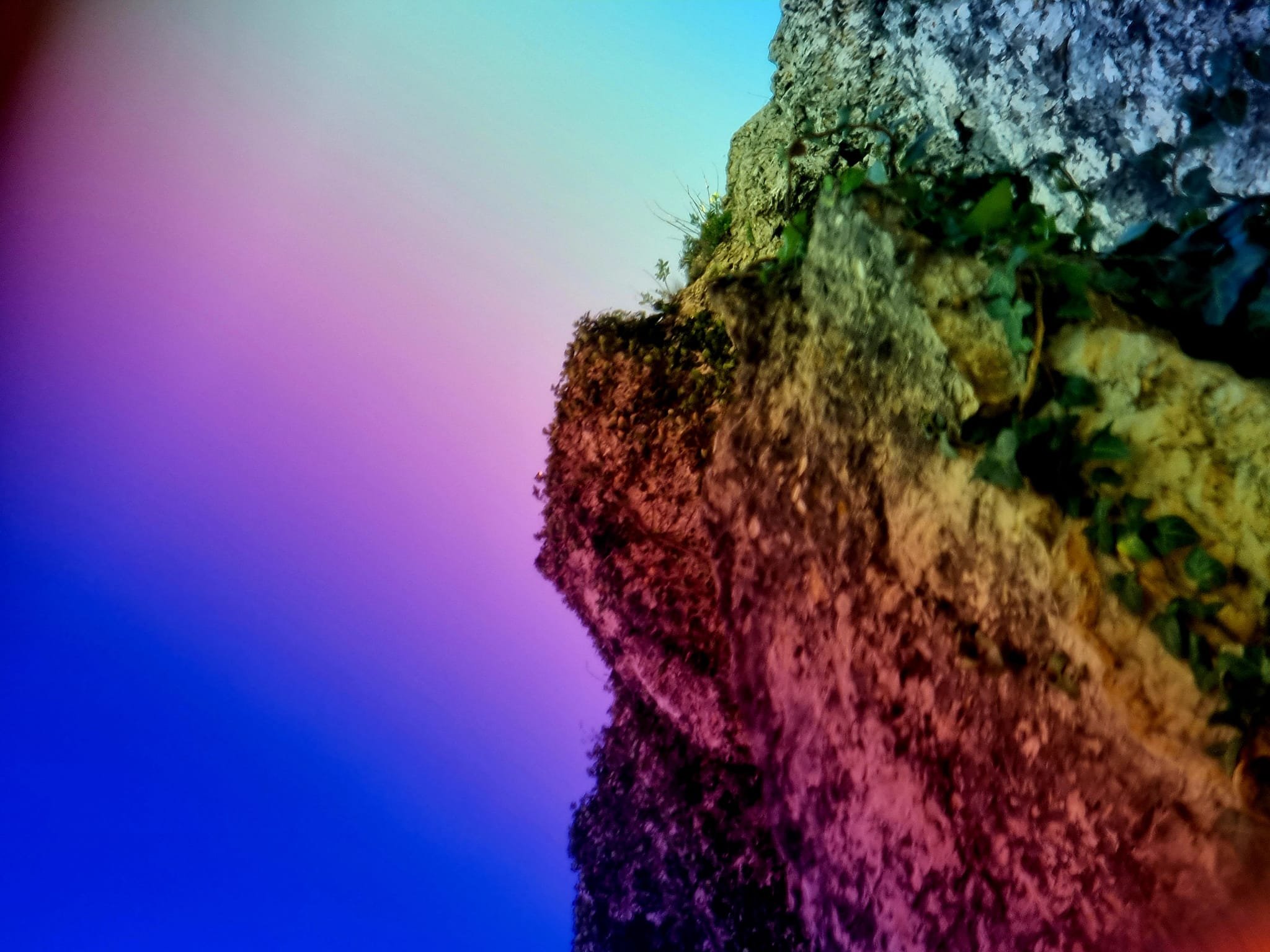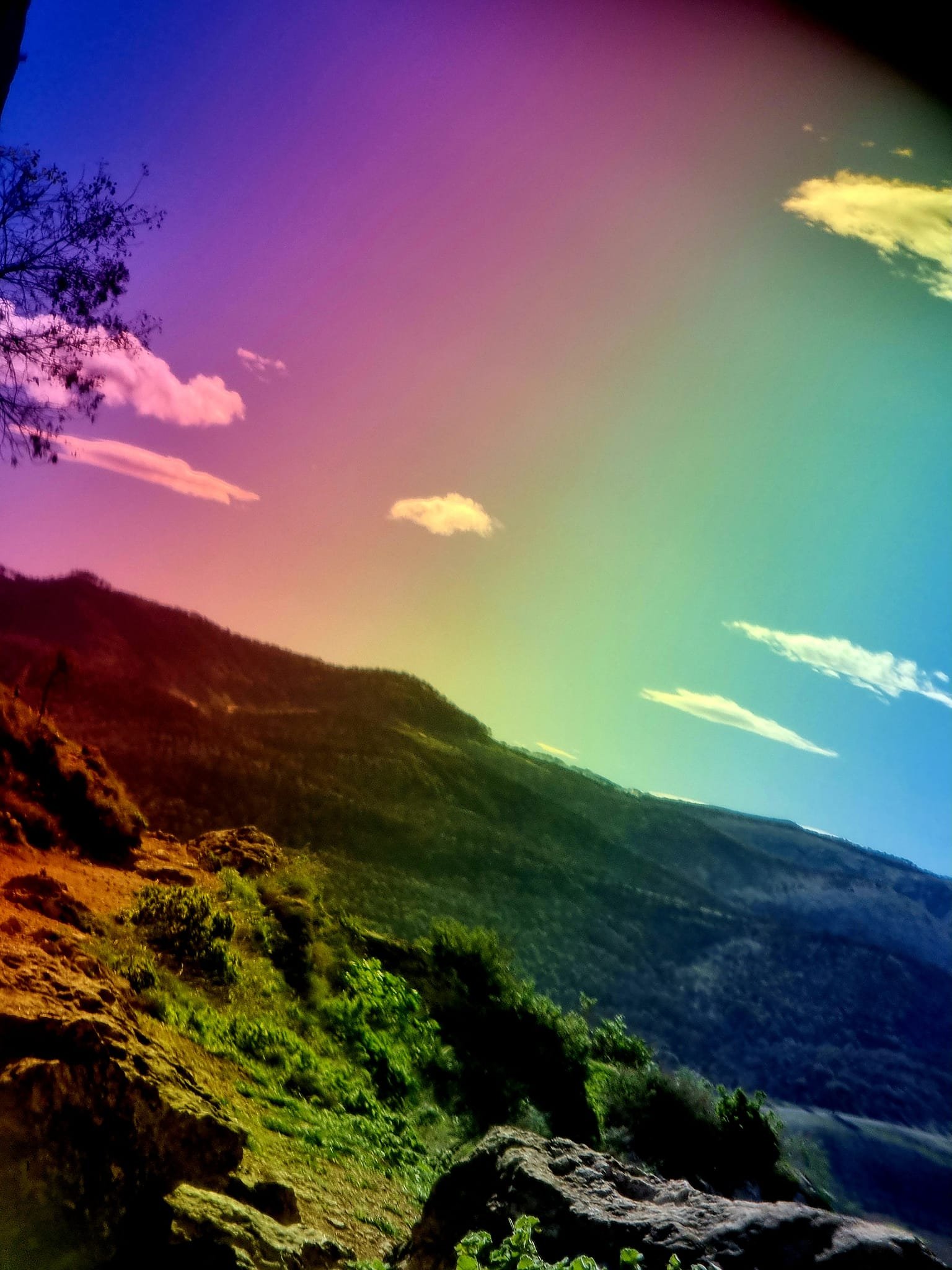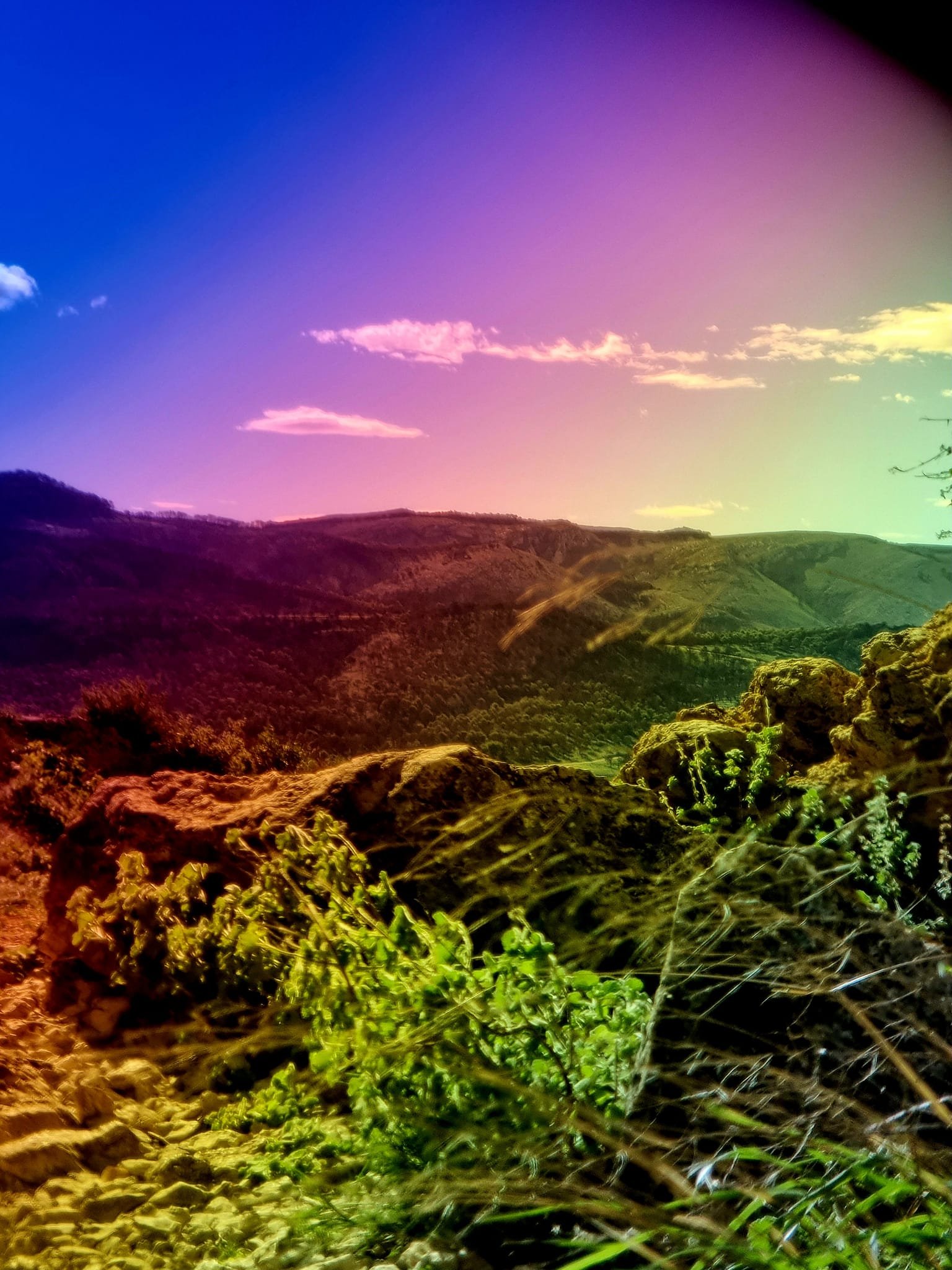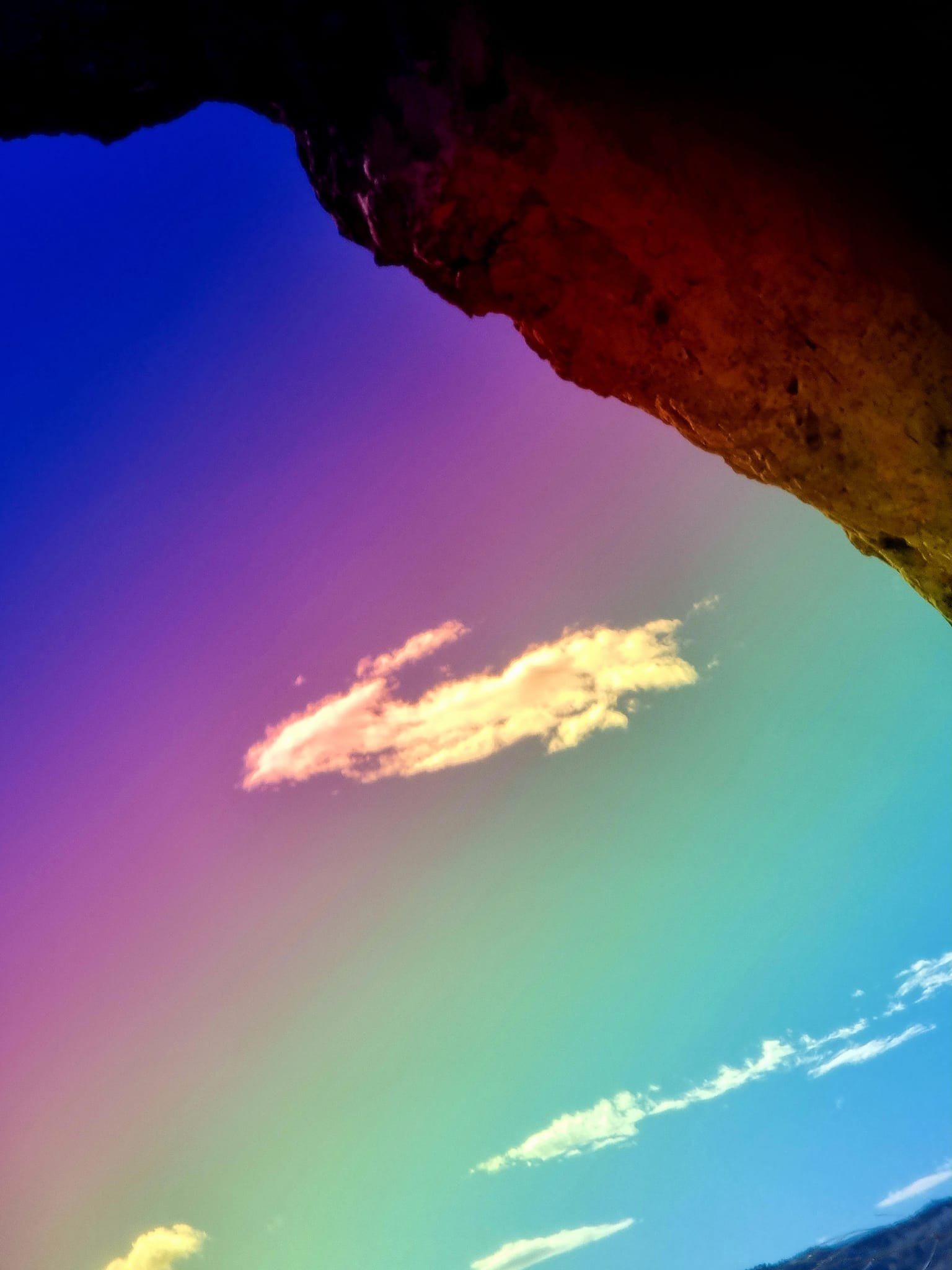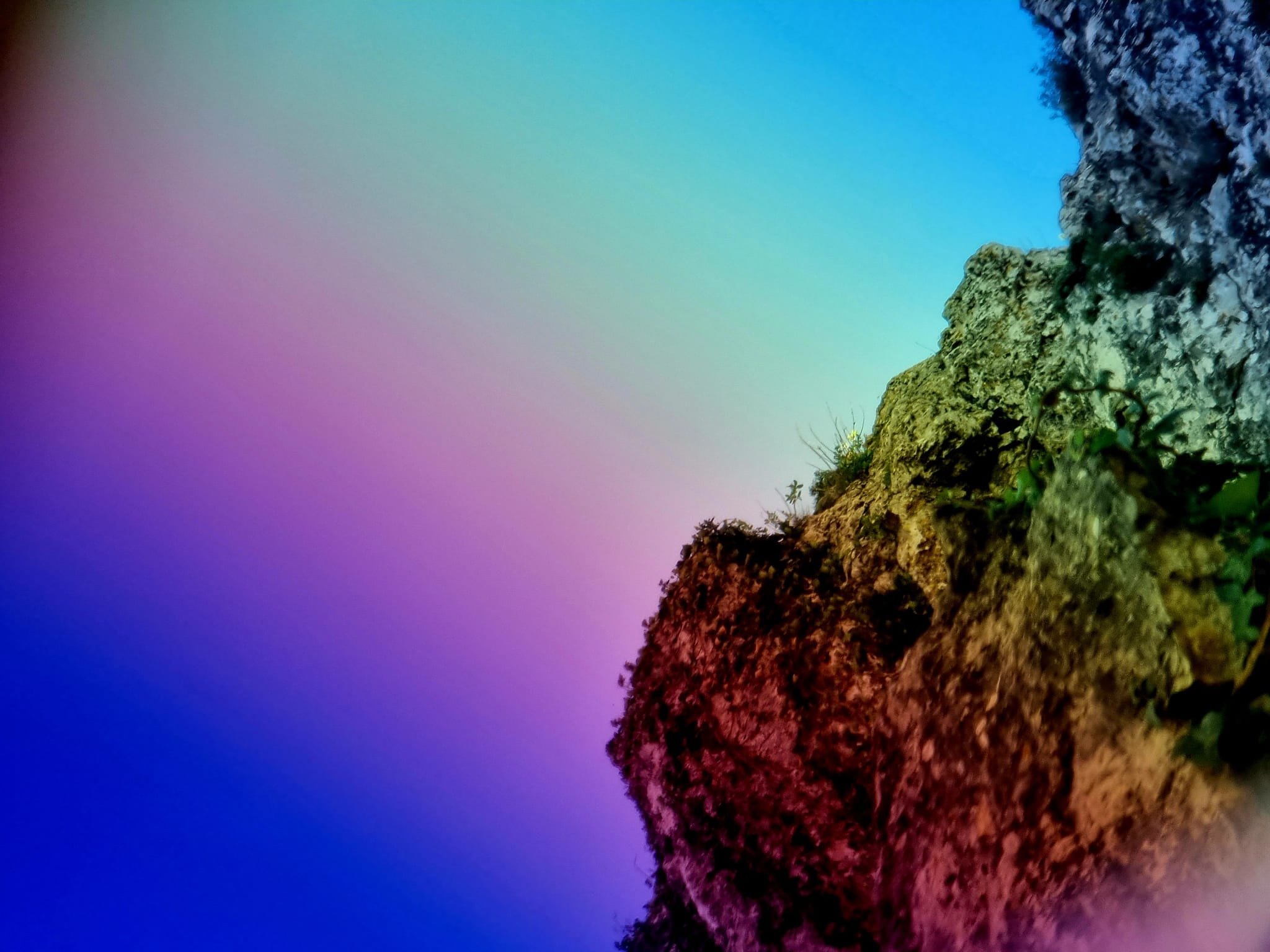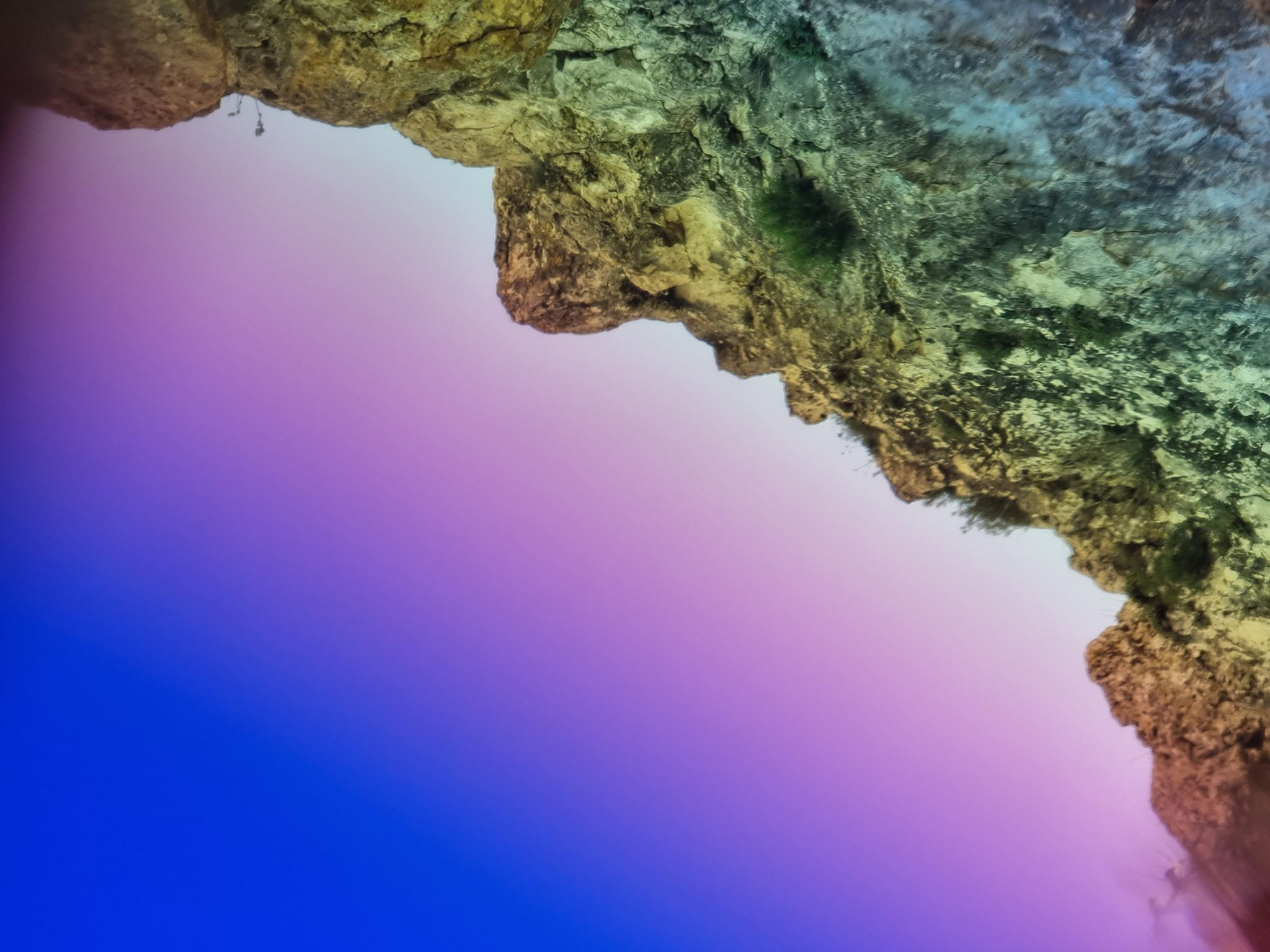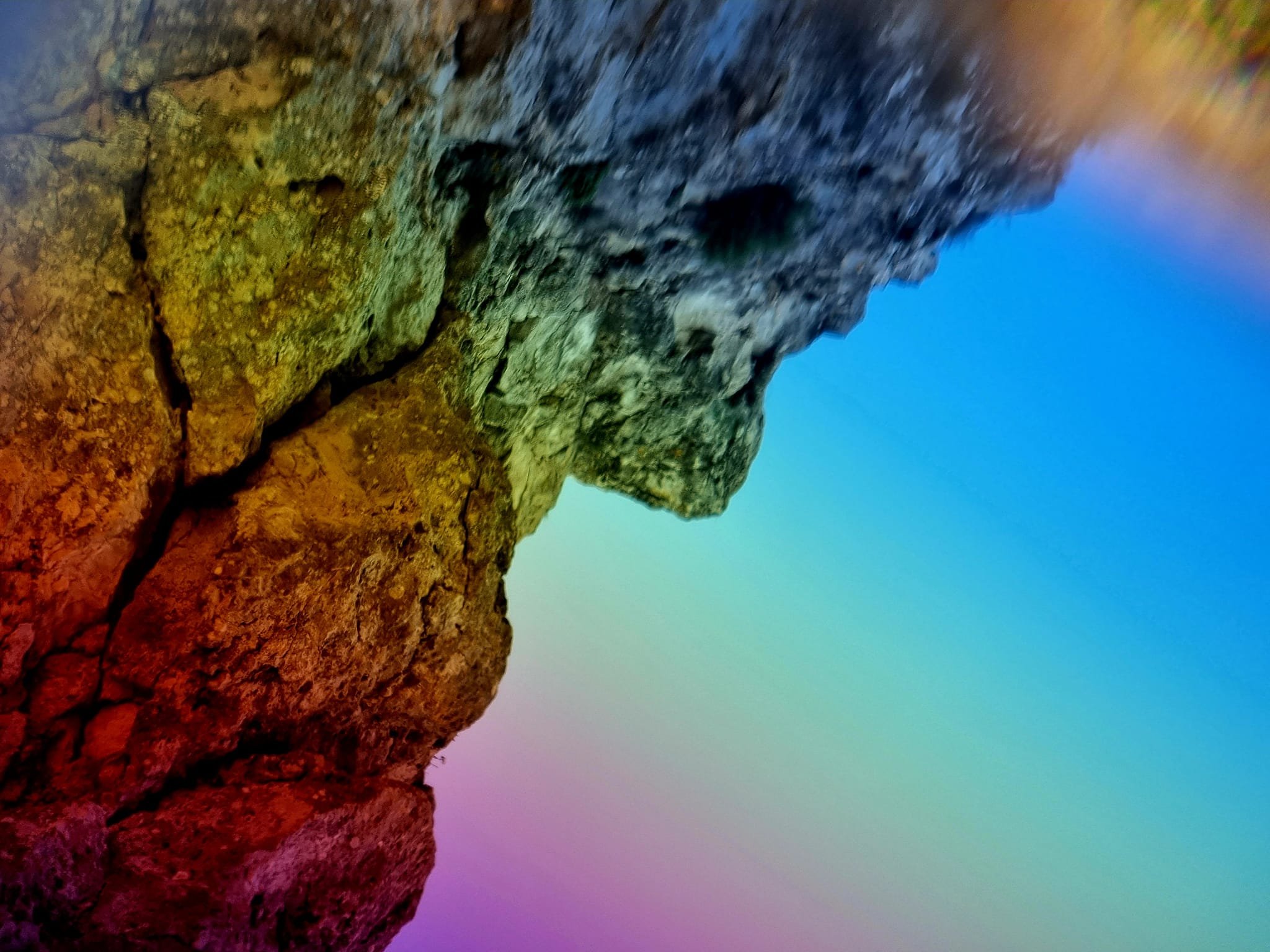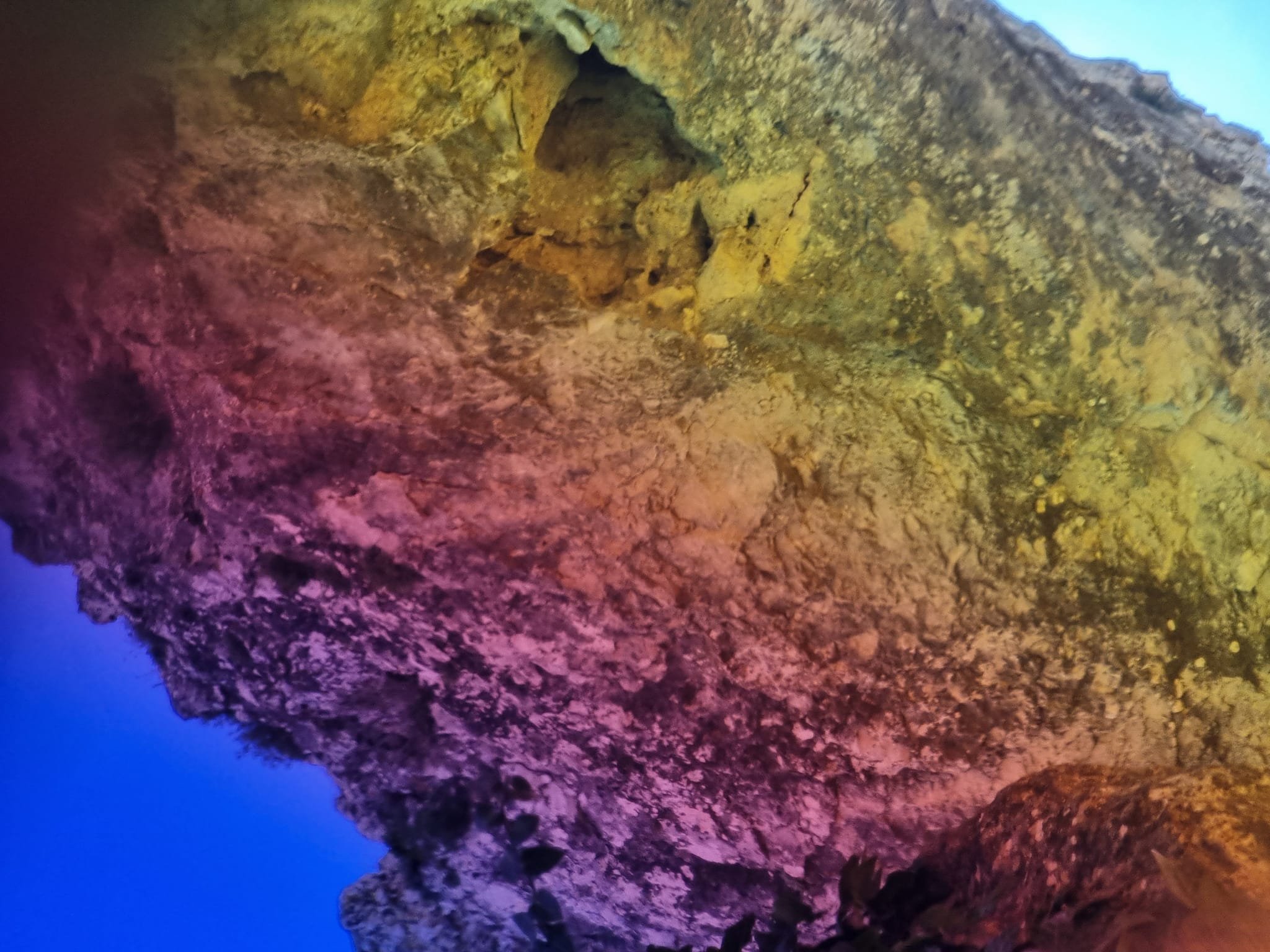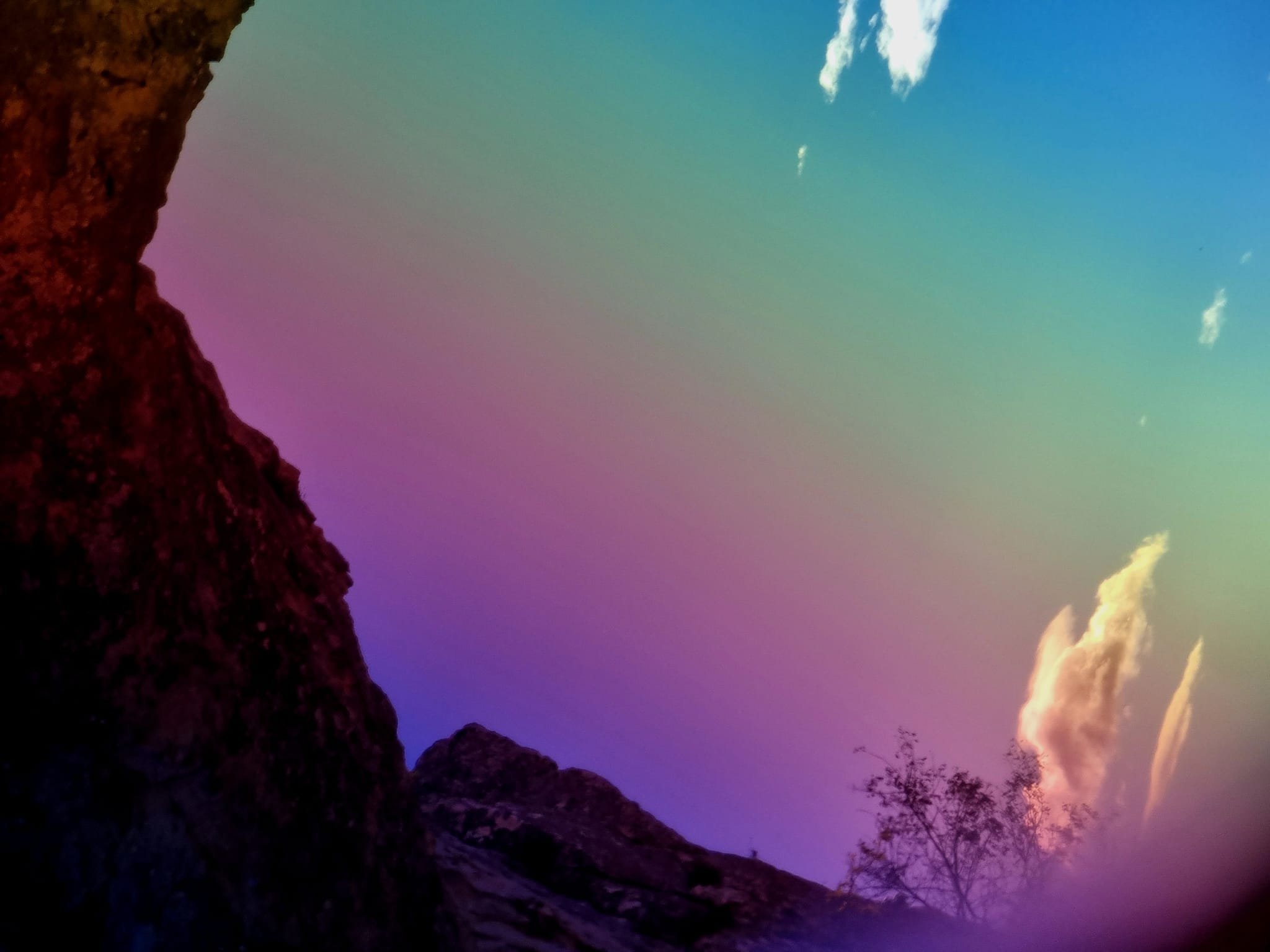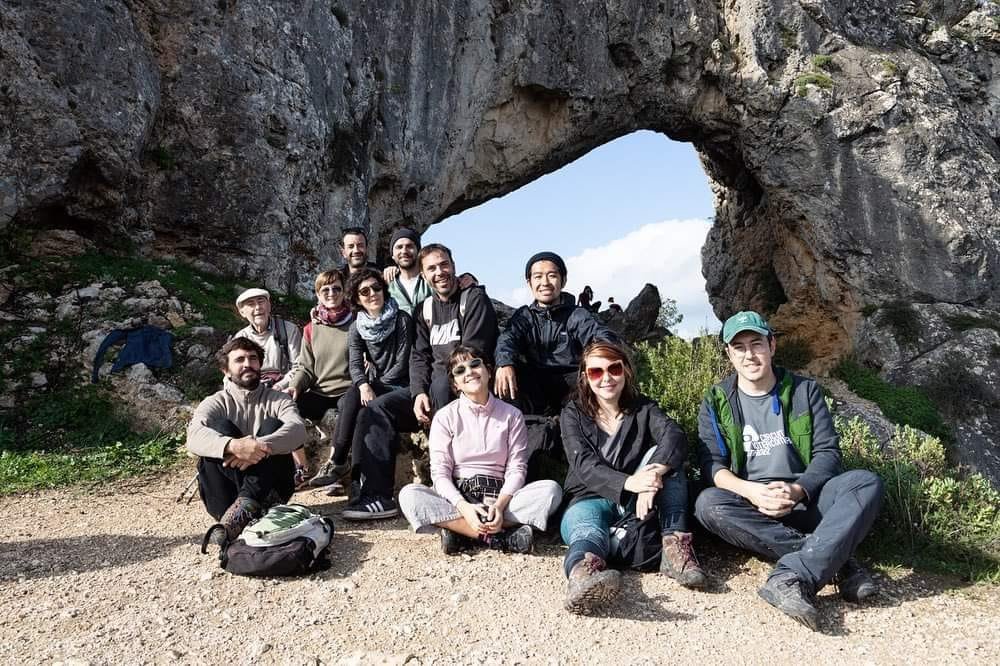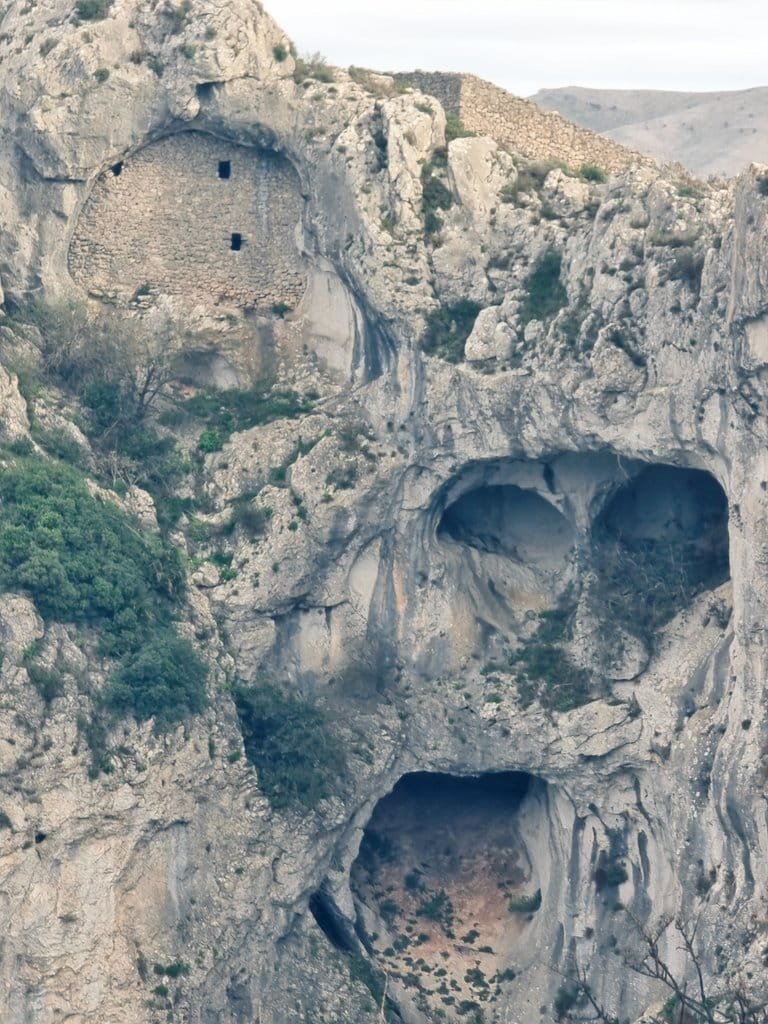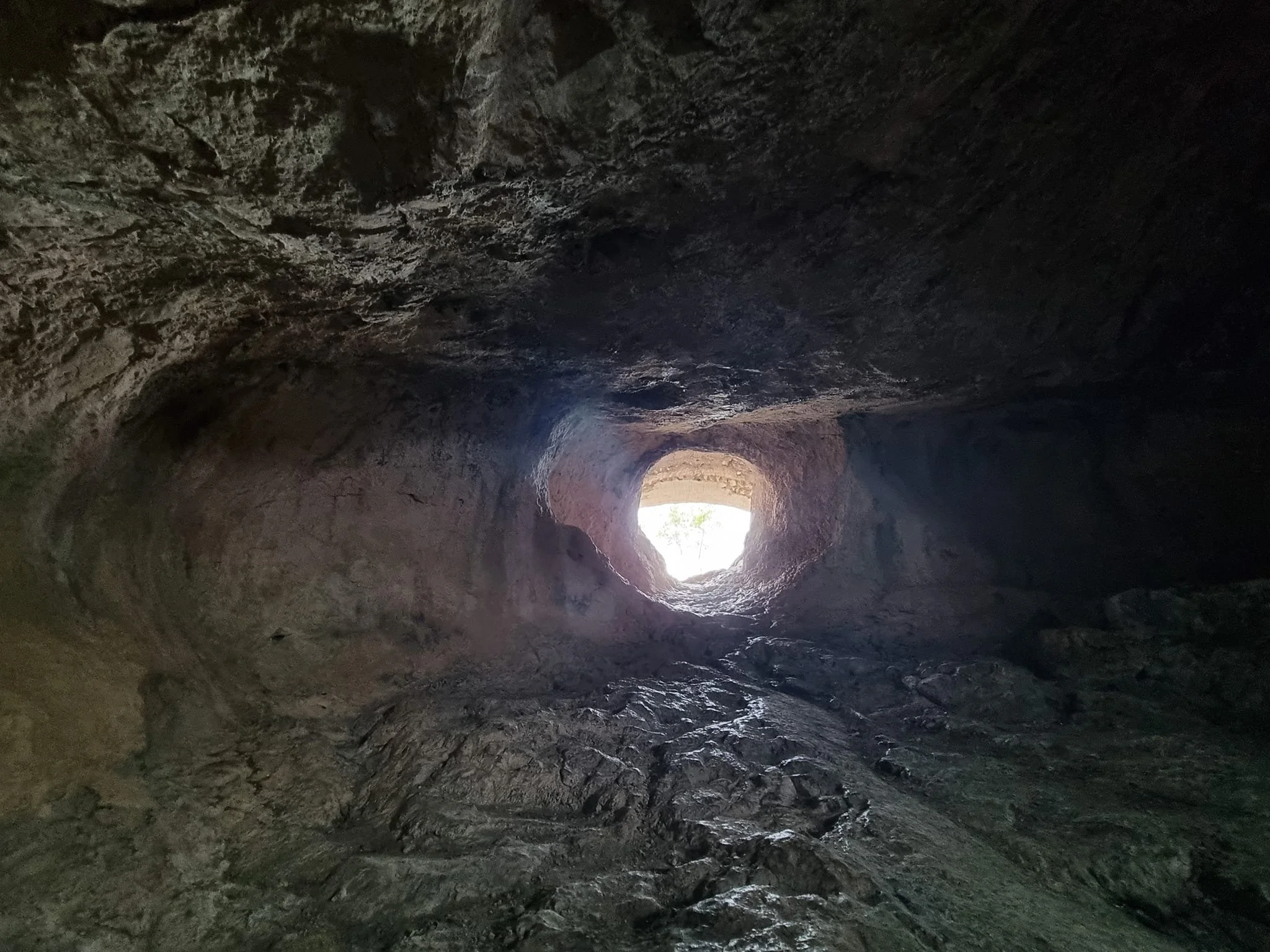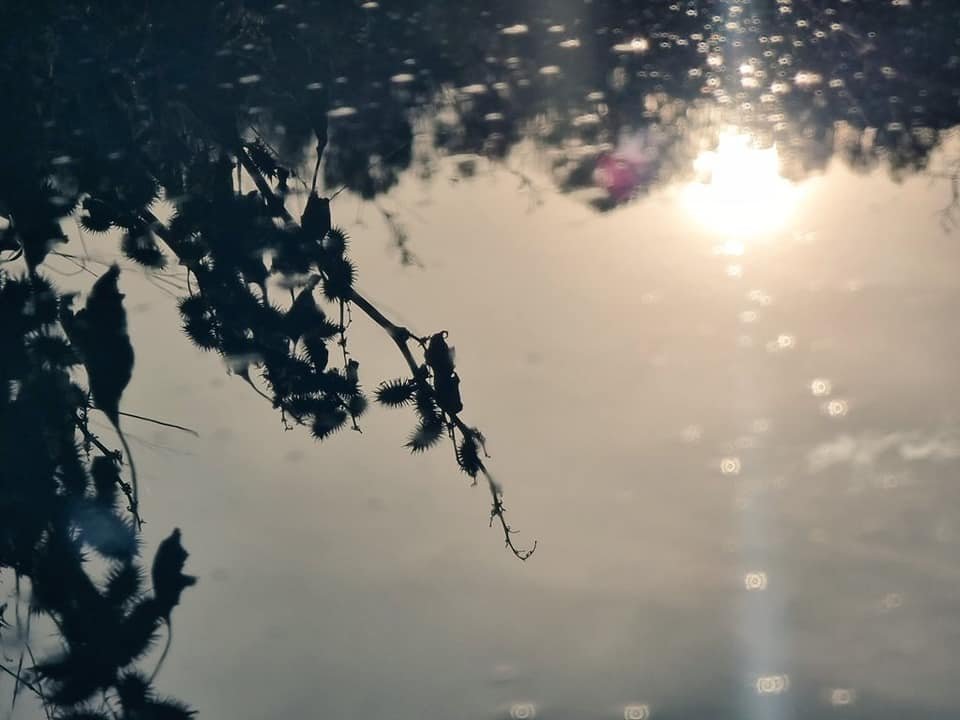Amy was selected as one of the seven international artists for the Enclave Land Art residency in Valencia in November 2022 for a project looking at site-sensitive cinema and solar alignment (official web page available here). As part of the land art trail, Cutler produced an outdoor cinema work for L'Alineació Solar de la Foradada, or Foradà, in La Vall de Gallinera. This is an astronomical phenomenon in which the sun shines through a perforation in the rock at the top of Penya Foradà. These rays of light penetrate the arch in such a way that they illuminate the site of an ancient monastery in the valley. On two days of the year, valley residents gather at the southernmost peak for a festival celebrating the rare event of this alignment of light.
This was used as a starting point for a project exploring the ways in which light itself acts as a local participant in the environment of film, remixing ideas of land art, camera obscura, and traditions of son et lumière spectacles, which began at chateaus in the Val de Loire. This site-sensitive projection mapping work also explores how cinema, as a science of light, can act as a local observatory for the gathering of environmental neighbours – as well as exploring bigger ideas about our shared existence as communities linked to solar states and solar futures as well as unique sheltered spaces (or enclaves).
A video about Amy’s work for Enclave is available here, part of the 2022 documentary.
ORIGINAL PROPOSAL: VALLEYGLOW
To bring cinema to life, you just apply light. How can this take place as a local environmental event? VALLEYGLOW is a project for Enclave 2022 which will explore the light itself as a local participant in the environment of film, at different locations of dawn and dusk, from the castles of the Solana to the rare flower gardens of the Ombria. This will develop experimental ‘luminist’ filmmaking approaches – using site-specific states of light as ways of telling alternative environmental stories of localities and the beings that live there – and interviews with valley inhabitants about their memories of Foradà. The name ‘valleyglow’ is a twist on ‘alpineglow’, an example of a unique phenomena of sunlight produced by illuminated backscatter between mountains. What are the hyperlocal light conditions and unique communities of light and shadow at Vall de la Gallinera, which we can call ‘valleyglow’? How do these conditions shape the forms and rhythms of life here?
ENCLAVE LAND ART (2022 theme)
The Sun's influence is mirrored by a natural separation of the valley itself in two segments: the Solana (permanently sunny side) and the Ombría (shady side). The human distribution within the villages is equally affected, all being located on the southern side of the Gallinera river, the backbone along which the water flows constantly, despite its appearance and disappearance.
The Solana, mainly shrubland, thinly vegetated and strongly sun-exposed, has very high temperatures during the summers. Decades back, this favoured transhumance and livestock transport, as well as the construction of farmyards - although abandoned today, they still stand as a fine expression of the dry-stone construction, typical of the region, and have now become a building heritage of the area.
The Ombría, the shaded area, is characterised by thicker vegetation and colourful terraces stretching across the whole rhombus-shaped valley.
Alongside this anthropic-natural link with the land/sun, a distinctive element, la foradà, originated thanks to the particular orography and an imaginative play of nature.
The natural arch in the rock is a coup du théâtre. The Sun wants to wink and sneak into the shadow. It is an unexpected spot that offers the Sun the chance to participate twice a year in this unattainable place. In the 17th century, some Franciscan monks interpreted this as a divine sign and built a monastery in its honour. The solar alignment reached notoriety and it was reinforced by this building. However, this was lost and forgotten until the beginning of this century.
As José Lull wrote in 2008 in La alineación solar de la foradá en la Vall de Gallinera, nowadays the monastery does not exist anymore. All the traces of its presence were cancelled, even from the collective memory of the valley. Only a vague memory has been heard about its existence before. Even the solar alignment through la foradà was lost. No alignment, no franciscans, no monastery. Everything forgotten, buried forever.
However, in recent years, the alignment of the Sun has made a comeback, and the legend of the monastery it illuminated has become part of territorial history and a rescue of historical memory.
In this second edition of the Enclave Land Art Residency, we invite artists to reflect upon the presence of the Sun and how it affected, is affecting and will affect human nature.
ARTIST BIO
Amy Cutler is a live cinema artist and sound designer from London who draws on her unusual training (a PhD in cultural geography) to create site-specific films and projection events. She is interested in cinema which is responsive to the conditions of the environment in which it is placed, and she often creates indoor and outdoor projects which draw on fieldwork, ecologies, local archives, and atmospheric data. Previously in her practice she has created live cinema and audio-visual installations for specific locations, including Pendle Hill, Lancashire; Lud’s Church Ravine, Staffordshire; and even an uninhabited Finnish fortress island, Örö. Overall, her work explores the intersections of species, spaces, and audiences, with a particular interest in rituals of place and community gatherings (such as skygazing).
